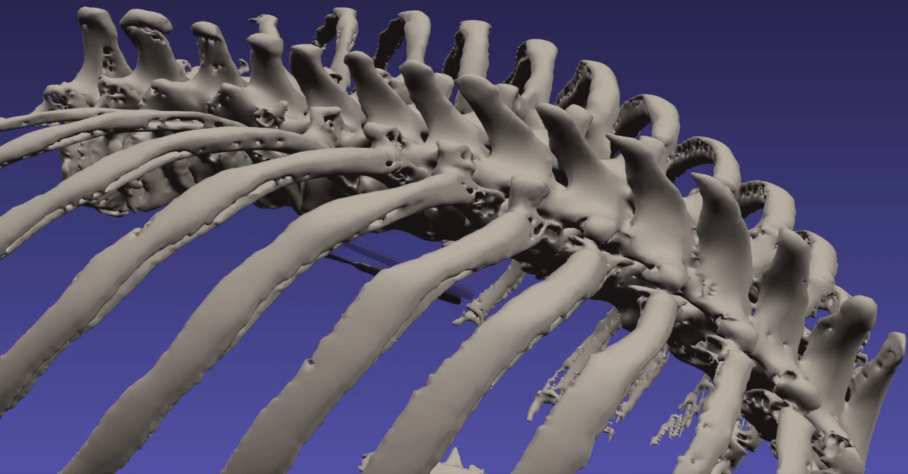Rigid Body Dynamics (RBD)
iMSTK provides its own implementation of a rigid body model. However, this has been replaced with our PBD model which now does all rigid bodies, soft bodies/deformables, and fluids.
Note: The RigidBodyModel2 is being deprecated, it is no longer supported by us and will most likely be removed in the next release. Use PBD Rigids instead.
The RigidBodyModel2 in iMSTK is a linear constraint based system. It is solved with projceted-gauss-seidel (PGS). The constraints are polymorphic meaning it is easy to extend. This system solves for impulses/instant changes in velocities to separate bodies in contact.
Usage
Rigid body simulations in iMSTK mostly find their use with tools.

Code
Unlike PBD, FEM, SPH the RigidBodyModel & RigidBodyModel2 deal with multiple differing geometries in the same model for implicit solves. RigidBodyModel2 can be configured like so:
| // This model is shared among interacting rigid bodies
auto rbdModel = std::make_shared<RigidBodyModel2>();
rbdModel->getConfig()->m_gravity = Vec3d(0.0, -2500.0, 0.0);
rbdModel->getConfig()->m_maxNumIterations = 10;
std::shared_ptr<RigidBody> body1 = rbdModel->getRigidBody();
body1->m_mass = 100.0;
body1->m_initPos = Vec3d(0.0, 8.0, 0.0);
body1->m_initOrientation = Quatd(Rotd(0.4, Vec3d(1.0, 0.0, 0.0)));
body1->m_inertiaTensor = Mat3d::Identity();
std::shared_ptr<RigidBody> body2 = rbdModel->getRigidBody();
... body 2 setup ...
|
However, if using a RigidObject2 in the scene it will create its RigidBody, usage then looks like the following:
| // This model is shared among interacting rigid bodies
imstkNew<RigidBodyModel2> rbdModel;
auto rbdModel = std::make_shared<RigidBodyModel2>();
rbdModel->getConfig()->m_gravity = Vec3d(0.0, -2500.0, 0.0);
rbdModel->getConfig()->m_maxNumIterations = 10;
// Object setup for the scene
auto cubeObj = std::make_shared<RigidObject2>();
cubeObj->setDynamicalModel(rbdModel);
cubeObj->setPhysicsGeometry(subdivide->getOutputMesh());
cubeObj->setCollidingGeometry(subdivide->getOutputMesh());
cubeObj->addVisualModel(visualModel);
// We can deal with the rigid body properties like so
cubeObj->getRigidBody()->m_mass = 100.0;
cubeObj->getRigidBody()->m_initPos = Vec3d(0.0, 8.0, 0.0);
cubeObj->getRigidBody()->m_initOrientation = Quatd(Rotd(0.4, Vec3d(1.0, 0.0, 0.0)));
cubeObj->getRigidBody()->m_intertiaTensor = Mat3d::Identity();
|
